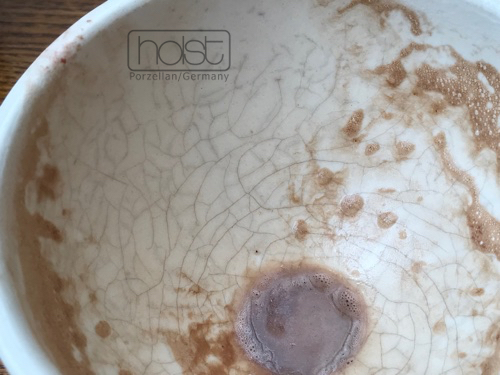Crackle-cracks

Crackle cracks in ceramics
A crackle or crackle crack is a mesh-like network of small cracks or hairline cracks in the glaze, which can lead to the total loss of a hygienic presentation of food or drink. The sole cause is the creation of different tensions that occur between the body and the overlying glaze during permanent use. The filling of boiling drinks or rinsing at > 80 °C causes thermal stress which the article cannot withstand. The shard itself is more porous than the glaze on top of it and thus inferior in terms of physical mass. It heats up more slowly than the glaze layer, and thus different expansions occur. The masses contract differently when cold, and expand differently when warm. Thus, the connection between these two materials is torn apart and the cracklele is formed.
With increasing use, these hairline cracks enlarge and finally form areas and furrows for the accumulation of foreign matter. Tea and coffee in particular leave quite unattractive colourings in crackle glazes. The article itself loses its characteristic of hygienic presentation of food and beverages and should be taken out of service immediately. As a rule of thumb, the lower the firing temperature, the higher the risk of crackling cracks. This already describes that it is not a defect in the porcelain, because the formation of such cracks in the glaze is the sole responsibility of the ceramic. Hard porcelain is fired at a temperature of at least 1,350 °C and thus has a physical density equal to that of the glaze and is definitely not susceptible to cracking.
In the name of the manufacturers of ceramics for table and board (not us at Holst Porzellan), however, it is said that crackle cracks do not represent a defect in the goods, but are to be classified as material-related wear and tear.
